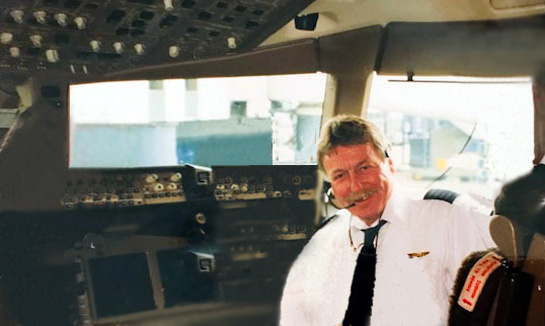Deke Clark was one of the FIRST HUMANS TO FLY IN FORMATION WITH WHOOPING CRANES. When he retired, he volunteered with Operation Migration, a non-profit organization to fly the trike and lead Whooping Cranes on the migratory route which existed many years ago, these are currently the Whooping cranes in the Eastern Flyway in over 100 years.

Deke Clark (DeWitt Allen Clark), was born in Middlebury, Vermont on September 11, 1937. He was the oldest of seven children and was raised on a farm near Otter Creek in Waltham, Vermont. His father became a licensed pilot and dedicated a small portion of the 500-acre farm to build a grass strip, so he could pursue his love of flying.
Deke’s passion for flying began as a toddler when he and a younger brother would squeeze into the seat next to his father while they flew over the rolling hills of Vermont farmland. Deke had a remarkably interesting career in aviation.
At the age of 18, Deke left the farm to follow his passion of flying and enrolled in the Air Force. He flew various Air Force jets, which were the venerable T-33, Shooting Star, the F-89, Sabre and his favorite, the F-86.. After the air force, he was hired by United Airlines and flew several airplanes, the 727, 737, 757 and 767. Deke progressed through the normal process of advancement to Captain, He was based in Denver Colorado, originally. He then made the move and transferred his base to be at Dulles International Airport in Virginia.
After several years, he moved on to serve his fellow pilots on the United ALPA Negotiating Committee. After more than 4 years in that position Deke returned to his first love, flying airplanes. He moved into the more modern, glass cockpit airplanes, the Boeing 757 and 767. After flying both airplanes domestically he transitioned to international flying and then moved on to become a Check Airman in both aircraft. The international flights were to Paris, London, Scotland, Germany, Spain and other countries. He loved French cuisine so he enrolled in a one year course in French cuisine in Washington D.C., He also enrolled in a photography course where he met his other half, Rebecca Cohen-Pardo, who was his living partner and friend for 29 years.
 Deke and Rebecca
Deke and Rebecca
Deke thouroughly enjoyed exchanging knowledge with all the pilots, both Captains and First Officers he checked out and qualified for passenger service.
United Airlines was the first U.S. carrier to add the Boeing 777 to its fleet and Deke became a member of a select group of company pilots who were involved in the certification process. He flew many missions with Boeing test pilots and was one of the instructors who taught the United Triple Seven (777) flight crews This involved many flights with Boeing test pilots in the certification process as well as working with many United Instructor Pilots assigned to the program. All the pilots involved in the original project became Check Airman on the B777 to assist in qualifying other pilots for passenger service.
Deke flew the round trip inaugural passenger flight on the B-777 from Washington‘s Dulles Airport to Heathrow in London. He remained a Check Airman on the B-777 until his retirement in September 1997. Deke was well respected by all the flight crew he worked with and all the pilots he mentored throughout his 33-year career with United Airlines.
